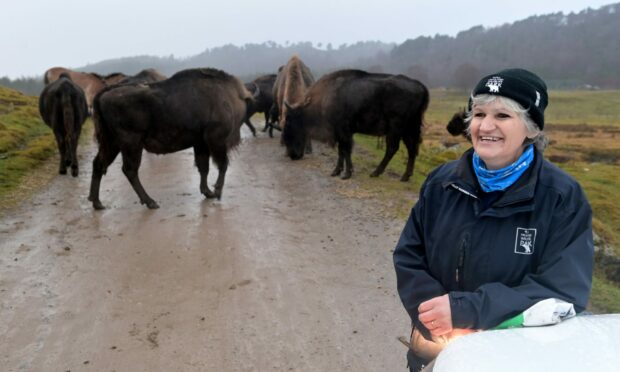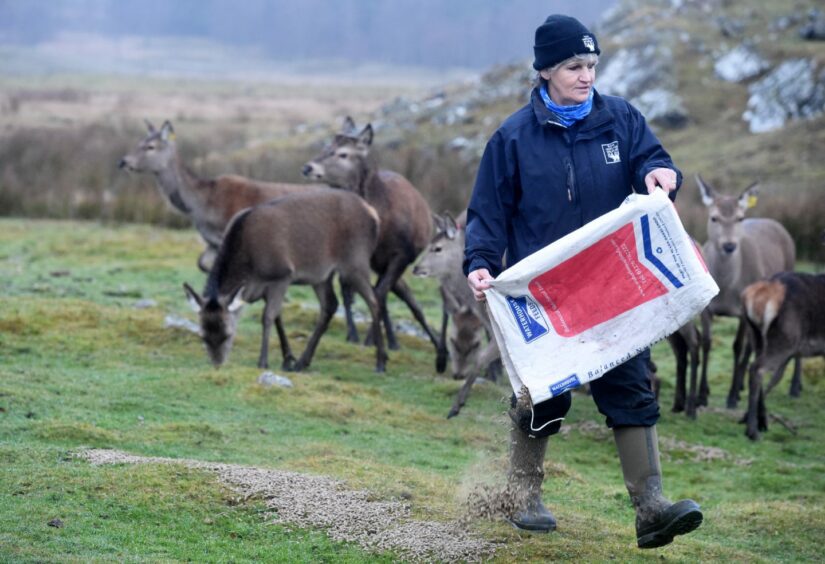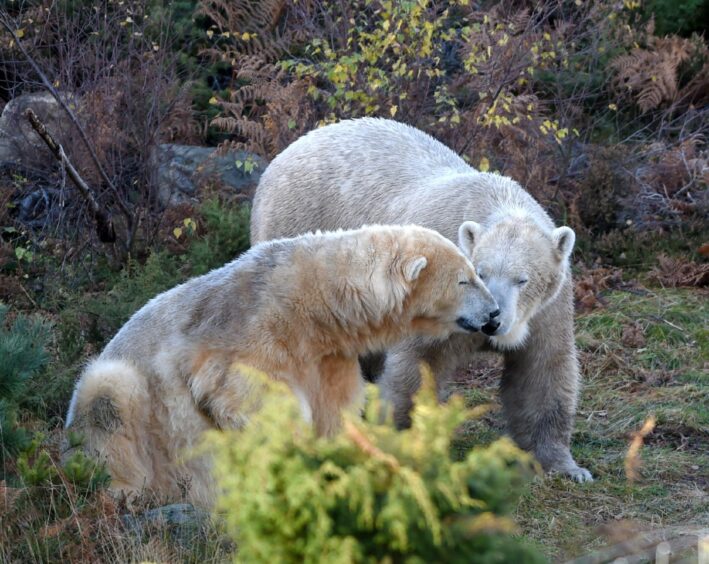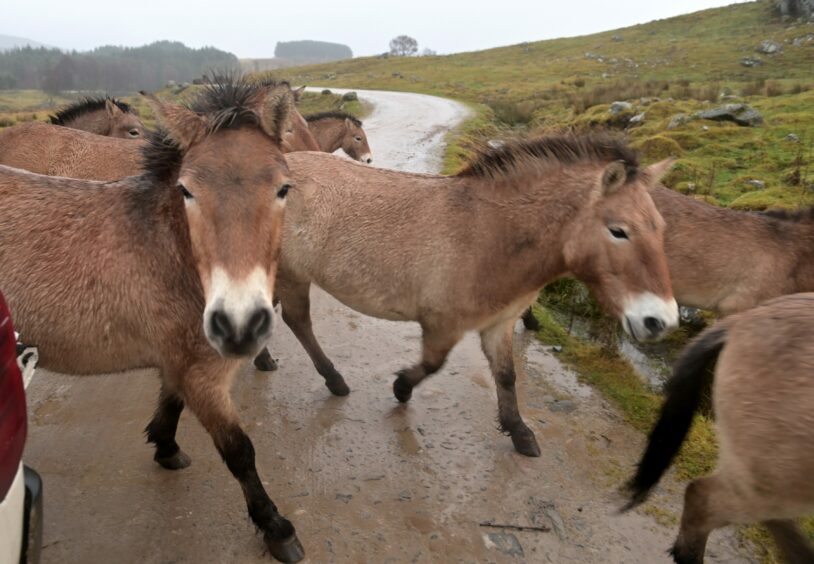Beyond the still-closed gates, there is a distant howl and the odd soft growl.
During the day, the animal noises are muffled by the excited cries of visitors young and old as they make their way through Highland Wildlife Park.
But even before those visitors have climbed into their cars to head to the Kingussie attraction, staff are hard at work making sure the animals are in good health and fed and watered.
The wildlife park is home to a whole host of animals from bison to elk to tigers and the newest arrival, a polar bear cub.
As well as the traditional enclosures, visitors can drive through the reserve to see some of the animals roaming in larger pastures.
Hoofstock
Animals at the park are split into two sections, the first being hoofstock and woolves. This includes camels, reindeer and Merino, the sole vicuna.
Head keeper Morag Sellar has worked at the park for 30 years and said every morning starts the same way – with a meeting at 8am.
“Everyone starts at 8am, we have a meeting with the animal team, our manager, the wildcat team are involved with that too, someone from the maintenance team and the vets,” she said.
“We talk about the day ahead and that’s usually until about 8.30am.”
Next, she’ll head out into the reserve in her vehicle with the trailer piled high with feed for the different animals. On her way around, she opens all the gates and checks the animals are fit and healthy.
The bison have come to be her favourites due to their herd mentality, but her love for her job comes from both the animals and the team she works with.
She said: “My favourite thing is working with the team of people I have.
“I also think it’s very satisfying to see an animal thriving, being able to give them the best care you can.”
In the mornings, Ms Sellar’s animals run towards her vehicle, with some even peeking their head into the car as soon as she opens the door – although she admits this may be more to do with the food than her.
Primates, birds and carnivores
The second section of the park is primates, birds and carnivores, which includes Scottish wildcats, red pandas and the famous polar bears.
Vickie Larkin is head carnivore keeper at the park. After joining Ms Sellar in the morning meeting, she heads out to tend to her own animals.
She said: “Some of the first jobs we do are check on the animals, check fences for safety.
“Then we give some of our amazing animals breakfast including the snow monkeys, Himalayan monals and Eurasian cranes.
“We also count the monkeys and make sure everyone is safe, healthy and accounted for.”
Ms Larkin’s favourite part of morning is checking in on the bears as they have a very cute habit.
“My favourite part of the morning is seeing what the boy bears are up to,” she said. “They are often spooning in the dens.”
‘Training is crucial’
Keepers at Highland Wildlife Park work closely with their animals to ensure they get any care they need.
There are now vets on site, which is a relatively new development and one that Ms Sellar describes as “a major breakthrough”.
She explained that she and her team have been training the Przewalski’s horses in particular to make them more comfortable around humans.
The major benefit of this is that they can provide care and treatment to the animals in safer ways than they would have had to otherwise.
“Training is crucial, say 20 years ago you would have to sedate a horse, to be under anaesthetic is a dangerous thing,” she said.
“We’ve managed to take blood from horses, we’ve managed to microchip them, we’ve trimmed their hooves.”
Despite previously joking that the animals come to her because of the food, she does believe that they also welcome attention from their keepers.
She said: “They do come to us for scratches and attention, not just for food.
“These horses are wild, they’re unbroken, they’re not like your domestic horses. These horses have come to us and we’ve worked with their needs and they come to us wanting this attention.
“It’s fantastic.”



